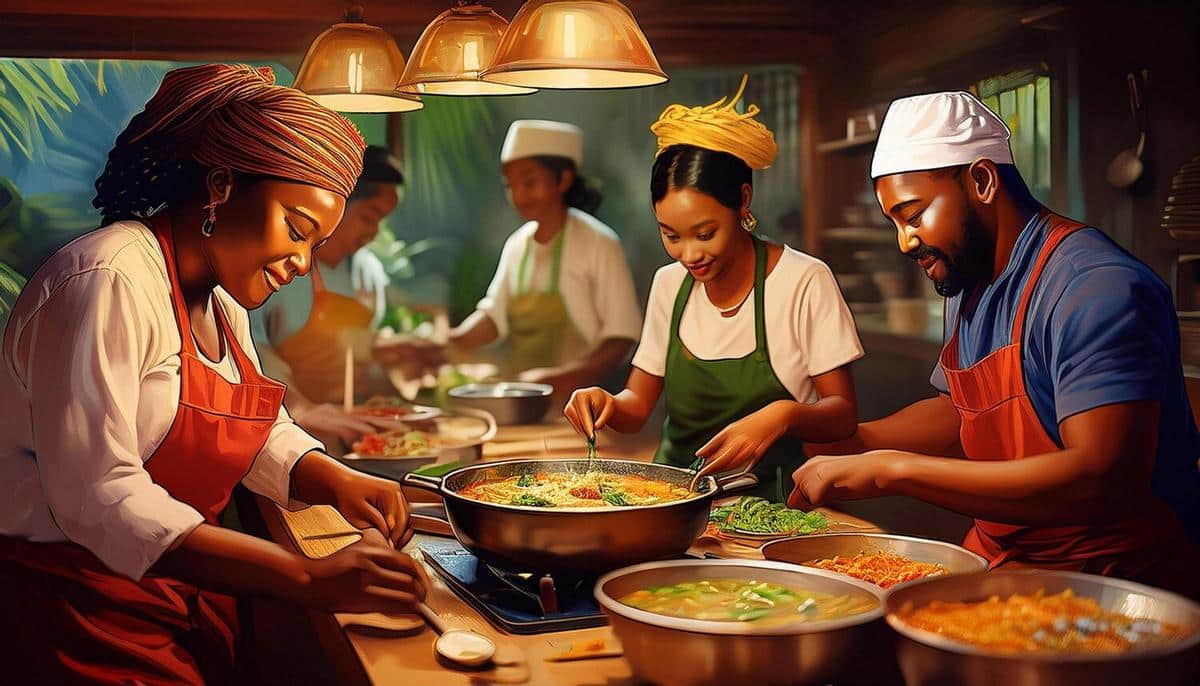
The Diversity of African Cuisines: Regional Highlights
African cuisines are as diverse and vibrant as the continent itself. Each region boasts unique flavors, ingredients, and cooking techniques that reflect its rich cultural tapestry. With over 50 countries, Africa’s culinary landscape offers an array of delicious dishes that are a testament to its history, geography, and traditions.
Exploring African cuisines is like diving into a world of flavors that are both familiar and exotic. From the spicy stews of West Africa to the aromatic tagines of North Africa, each dish tells a story of its origins and the people who cherish it.
Regional Highlights
West African Delights
The culinary scene in West Africa is a vibrant mix of spices, grains, and legumes. Dishes like jollof rice and suya are beloved for their bold flavors. According to culinary expert Zoe Adjonyoh, ‘The use of spices like ginger, garlic, and chili peppers in West African cuisine is not just for flavor but also for medicinal purposes.’
North African Aromas
North African cuisine is heavily influenced by the Mediterranean, with an emphasis on spices such as cumin, coriander, and saffron. The use of preserved lemons and olives adds a unique twist to dishes like couscous and tagine. A 2021 study by the African Food Heritage Project highlights that North African diets are among the healthiest due to their reliance on whole foods and minimal processing.
East African Flavors
East Africa offers a harmonious blend of traditional African and Indian influences. Dishes like ugali and injera are staple foods, providing a base for flavorful stews and sauces. Chef Marcus Samuelsson notes, ‘The fusion of spices in East African dishes reflects the region’s trade history, bringing together flavors from across the globe.’
Southern African Varieties
Southern African cuisine is a mix of indigenous ingredients and colonial influences. The use of maize, beef, and game meats is prevalent, with dishes such as biltong and pap showcasing the region’s agricultural bounty.
Table of Popular African Dishes
| Region | Dish | Main Ingredients |
|---|---|---|
| West Africa | Jollof Rice | Rice, tomatoes, peppers |
| North Africa | Tagine | Lamb, apricots, almonds |
| East Africa | Injera | Teff flour, water |
| Southern Africa | Biltong | Beef, vinegar, spices |
| West Africa | Suya | Beef, peanuts, spices |
| North Africa | Couscous | Semolina, vegetables |
| East Africa | Ugali | Maize flour, water |
| Southern Africa | Pap | Maize meal, water |
Frequently Asked Questions
What makes African cuisine unique?
African cuisine is unique due to its diverse use of spices, grains, and local ingredients, each reflecting the region’s cultural and historical influences.
Are African dishes healthy?
Many African dishes are healthy, utilizing whole foods and minimal processing, particularly in regions like North Africa where diets are rich in vegetables and lean proteins.
Conclusion
Exploring the diversity of African cuisines offers a glimpse into the continent’s rich cultural heritage. Whether you’re savoring a spicy West African stew or a fragrant North African dish, there’s something to delight every palate. Embrace the flavors and techniques of African cooking, and let your culinary journey begin in your own kitchen.


